About Smart Growth
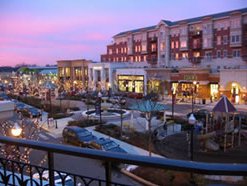
Development decisions affect many aspects of people's everyday lives - their homes, their health, the schools their children attend, the taxes they pay, their daily commute, the natural environmental around them, and economic opportunity in their community. Smart growth is an overall approach of development and conservation strategies that can help protect our health and natural environment and make our communities more attractive, economically stronger and resilient to climate change.
Based on the experience of communities around the nation, the Smart Growth Network developed a set of ten (10) basic principles to guide smart growth strategies.
- Mix land uses.
- Take advantage of compact building design.
- Create a range of housing opportunities and choices.
- Create walkable neighborhoods.
- Foster distinctive, attractive communities with a strong sense of place.
- Preserve open space, farmland, natural beauty and critical environmental areas.
- Strengthen and direct development towards existing communities.
- Provide a variety of transportation choices.
- Make development decisions predictable, fair and cost effective.
- Encourage community and stakeholder collaboration in development decisions.
On this page:
EPA and Smart Growth
How and where communities develop can have a major impact on human health and the environment. EPA works with local, state and national agencies; nonprofits and community organizations; academia; and the development sector to encourage development strategies that support thriving local economies, provide attractive and affordable neighborhoods for people of all income levels and mitigate and adapt to climate change. EPA's smart growth efforts help create healthier and more environmentally sustainable communities.
In the United States, development decisions are predominantly under state and local jurisdictions, and policies and regulations vary by community and state. The federal government generally does not directly regulate development, although many federal policies, particularly those related to the environment, transportation and housing, do affect how communities develop. The federal government can also help municipalities, states and the development sector better understand the impacts of development patterns.
EPA's Office of Community Revitalization supports communities, Tribes, states and regions to encourage better growth and development by:
- Providing technical assistance.
- Conducting research and creating tools, reports and publications.
- Convening a wide range of interests and influencing networks.
Learn more about what smart growth strategies look like on the ground in This is Smart Growth, or visit our Examples of Smart Growth Communities and Projects page.
Environmental Benefits of Smart Growth
Development guided by smart growth principles can result in many direct and indirect environmental benefits, like minimizing air and water pollution, reducing greenhouse gas emissions, conserving resources, encouraging the cleanup and reuse of contaminated properties and preserving natural and environmentally sensitive lands.
For more information on the environmental effects of development and the benefits of smart growth, see Our Built and Natural Environments: A Technical Review of the Interactions between Land Use, Transportation, and Environmental Quality (2nd edition).
Specific benefits are described in more detail below.
Air Quality
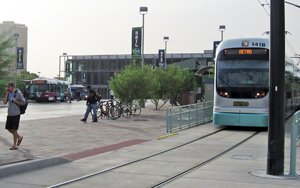
Compact communities with a mix of uses and transportation options make it easy for people to choose to walk, bicycle or take public transit instead of driving. People who choose to drive generally can drive shorter distances. Less travel by motor vehicles can reduce air pollution by smog-forming emissions and other harmful pollutants.
Resources
- Smart Growth and Transportation – Transportation facilities and networks have the power to shape development within communities and determine their character and quality of life. This page focuses on the intersection of transportation and smart growth.
- Transportation Electrification – Electric vehicles are becoming more widely adopted, while public and private investment in charging stations is increasing. Communities can achieve multiple benefits when they align these investments with local needs and existing infrastructure. Smart growth strategies can help communities guide investments to get the most benefit from transportation electrification.
Climate Change
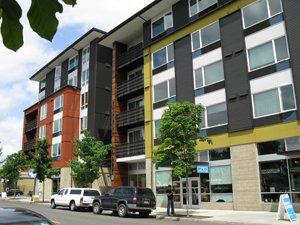
Smart growth policies and strategies can also help communities prepare for and adapt to the impacts of climate change. Transportation options (such as walking, bicycling, public transit, micro-mobility or electric vehicles) and compact land use patterns can reduce air pollution and decrease the emissions of greenhouse gases that contribute to climate change. For homes and buildings, using energy-efficient, green building techniques can also reduce greenhouse gas emissions from construction and ongoing energy use.
Resources
- Smart Growth and Climate Change – Smart growth land use, planning and development strategies can reduce greenhouse gas emissions and help communities better prepare for climate change impacts while bringing multiple additional benefits. This page deals with climate change as it relates to land use and development.
- Smart Growth Strategies for Disaster Resilience and Recovery – How and where development occurs can have a major impact on how well communities can prepare for and how quickly they can recover from natural disasters. Integrating smart growth approaches into preparedness and recovery can help communities become more resilient to hazards.
Water Quality
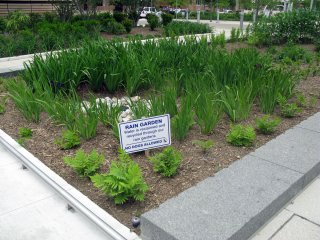
Compact development and open space preservation can help protect water quality by reducing paved surfaces and allowing natural lands to filter rainwater and runoff before it reaches drinking-water supplies. Green infrastructure techniques, which mimic natural processes to capture, hold, absorb, and filter stormwater, can also be incorporated into streets, sidewalks, parking lots, and buildings to improve water quality.
Resources
- Smart Growth and Water – Land use and development patterns have significant impacts on water quality, quantity, usage and flow. Communities can use smart growth planning and design approaches to improve access to quality water resources and mitigate the impacts of development on local watersheds.
- Water Publications – This page includes smart growth publications for a variety of topics. You can use the table to filter for "water and green infrastructure."
Brownfields Redevelopment

Brownfields are abandoned, idled or underused industrial and commercial properties where redevelopment is complicated by real or perceived environmental contamination. Cleaning up and redeveloping a brownfield can remove blight and environmental contamination, catalyze neighborhood revitalization, lessen development pressure on undeveloped land and use existing infrastructure.
Resources
- Smart Growth and Brownfields – Redeveloping brownfields in infill locations can transform abandoned or underused sites into community and economic assets and help preserve natural lands. Learn more about using smart growth to enable infill brownfields redevelopment.
- Smart Growth and Preservation of Existing and Historic Buildings – The preservation and renovation of historic buildings can play an important part in revitalizing a neighborhood or community while helping to maintain its local character and unique characteristics. Renovating existing buildings can also provide a more sustainable alternative to site redevelopment.
- EPA's Brownfields Program – The Brownfields Program provides grants and technical assistance to communities, states, tribes and others to assess, safely clean up and sustainably reuse contaminated properties.
- EPA's Land Revitalization Program – The Land Revitalization Program helps remove barriers to contaminated property redevelopment. When a property once again becomes an asset to the community, the redevelopment often brings about new opportunities to protect public health, improve the environment and grow the local economy.
Open Space Conservation
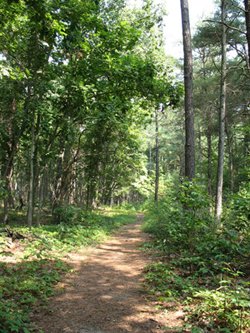
Preserving natural lands and waterways and encouraging growth in existing communities protects farmland, wildlife habitat, outdoor recreation and natural water filtration that ensures clean drinking water.
Resources
- Smart Growth and Open Space Conservation – Planning for open space and conservation helps communities protect their environment, improve quality of life and preserve critical elements of local heritage, culture and economy.
